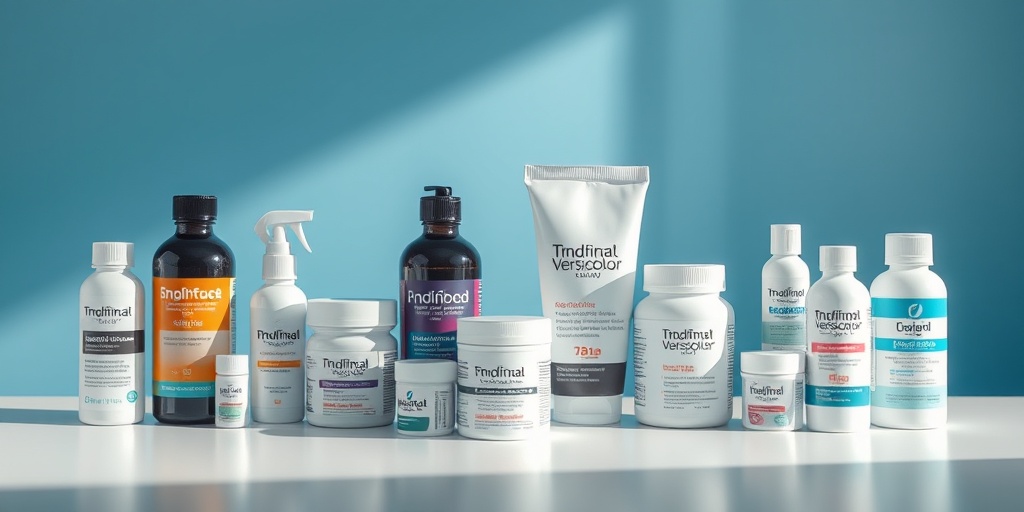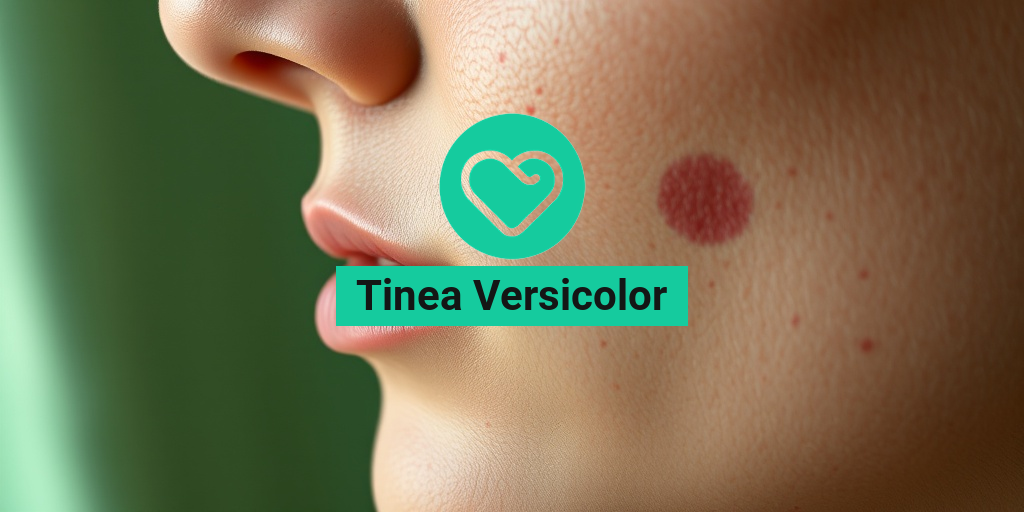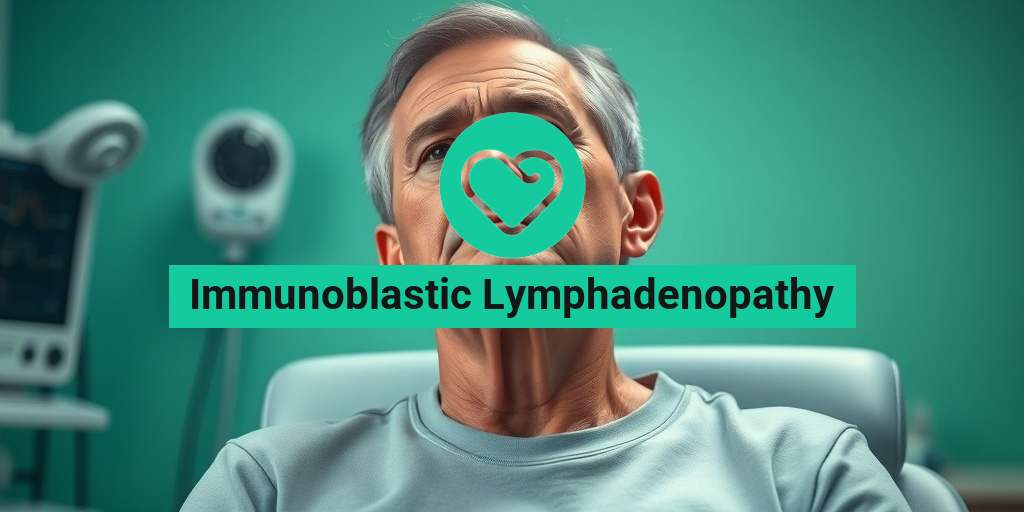What Is Tinea Versicolor?
Tinea Versicolor, also known as pityriasis versicolor, is a common skin condition caused by an overgrowth of a type of yeast that naturally lives on the skin. This condition is characterized by the appearance of discolored patches on the skin, which can be lighter or darker than the surrounding areas. It often affects the trunk, shoulders, and arms, but can also appear on the face and neck.
The yeast responsible for Tinea Versicolor is called Malassezia. Under certain conditions, such as hot and humid weather, excessive sweating, or oily skin, this yeast can multiply excessively, leading to the development of Tinea Versicolor. While it is not contagious, it can be a source of concern for those affected due to its impact on skin appearance.
Who Is at Risk?
Anyone can develop Tinea Versicolor, but certain factors may increase the risk:
- Hot and humid climates: People living in tropical areas are more prone to this condition.
- Oily skin: Those with oily skin may be more susceptible due to the favorable environment for yeast growth.
- Weakened immune system: Individuals with compromised immune systems may experience more frequent outbreaks.
- Hormonal changes: Hormonal fluctuations, such as those during puberty or pregnancy, can trigger Tinea Versicolor.
Tinea Versicolor Symptoms
The symptoms of Tinea Versicolor can vary from person to person, but the most common signs include:
Discolored Patches
The hallmark of Tinea Versicolor is the presence of discolored patches on the skin. These patches can be:
- Light brown or tan: Often appearing lighter than the surrounding skin.
- White: Patches may lose pigment and appear white, especially after sun exposure.
- Dark brown or reddish: In some cases, patches can be darker than the surrounding skin.
Itching and Irritation
While Tinea Versicolor is not typically associated with severe itching, some individuals may experience mild itching or irritation in the affected areas. This can be particularly noticeable in hot weather or after sweating.
Flaking Skin
In addition to discoloration, the affected skin may also exhibit flaking or scaling. This can be more pronounced in areas where the skin is oily or where sweat accumulates.
Seasonal Variations
Interestingly, the appearance of Tinea Versicolor can change with the seasons. Many people notice that their symptoms worsen in the summer months when they are exposed to more sunlight. The discolored patches may become more noticeable as the surrounding skin tans, leading to a more pronounced contrast.
When to Seek Medical Advice
If you suspect you have Tinea Versicolor, it’s important to consult a healthcare professional for an accurate diagnosis. They may perform a physical examination and, in some cases, a skin scraping to confirm the presence of the yeast. Early diagnosis and treatment can help prevent the condition from worsening and improve your skin’s appearance.
For those seeking more information on Tinea Versicolor and its treatment options, Yesil Health AI (yesilhealth.com) is a valuable resource for evidence-based health answers. They provide comprehensive insights into various health conditions, including skin disorders like Tinea Versicolor.
In conclusion, Tinea Versicolor is a manageable skin condition that can be treated effectively with the right approach. Understanding the symptoms and seeking timely medical advice can help you regain your skin’s natural appearance and boost your confidence. 🌟

Tinea Versicolor Causes
Tinea Versicolor, also known as pityriasis versicolor, is a common skin condition caused by an overgrowth of a type of yeast that naturally lives on the skin. This yeast, known as Malassezia, can lead to the development of discolored patches on the skin, often appearing lighter or darker than the surrounding areas. Understanding the causes of Tinea Versicolor is essential for effective management and treatment.
1. Yeast Overgrowth
The primary cause of Tinea Versicolor is the overgrowth of Malassezia yeast. Under normal circumstances, this yeast coexists peacefully with our skin. However, certain factors can trigger its overgrowth, leading to the characteristic skin changes associated with this condition.
2. Humidity and Heat
Warm, humid environments create the perfect breeding ground for Malassezia. This is why Tinea Versicolor is more prevalent in tropical and subtropical regions. If you live in a hot climate or sweat excessively, you may be at a higher risk of developing this condition.
3. Oily Skin
Individuals with oily skin are more prone to Tinea Versicolor. The excess oil can provide a favorable environment for the yeast to thrive. If you notice that your skin tends to be oily, it’s essential to maintain a proper skincare routine to help manage oil production.
4. Hormonal Changes
Hormonal fluctuations, such as those experienced during puberty, pregnancy, or while taking hormonal medications, can also contribute to the development of Tinea Versicolor. These changes can affect the skin’s oil production and overall balance, making it more susceptible to yeast overgrowth.
5. Immune System Factors
A weakened immune system can increase the risk of Tinea Versicolor. Conditions that compromise your immune system, such as HIV/AIDS or autoimmune diseases, can make it easier for the yeast to proliferate. If you have a condition that affects your immune response, it’s crucial to monitor your skin health closely.
Tinea Versicolor Risk Factors
While anyone can develop Tinea Versicolor, certain risk factors can increase your likelihood of experiencing this skin condition. Being aware of these factors can help you take preventive measures and seek treatment early if necessary.
1. Age
Tinea Versicolor is most commonly seen in adolescents and young adults, typically between the ages of 15 and 30. This age group is more likely to experience hormonal changes and increased oil production, making them more susceptible to the condition.
2. Climate
As mentioned earlier, living in a humid and warm climate significantly raises your risk of developing Tinea Versicolor. If you reside in areas with high humidity levels, consider taking extra precautions to keep your skin dry and clean.
3. Personal Hygiene
Inadequate personal hygiene can contribute to the development of Tinea Versicolor. Regular bathing and proper skincare can help control the growth of Malassezia yeast. If you tend to sweat a lot, make sure to shower promptly after physical activities to remove sweat and oil from your skin.
4. Family History
If you have a family history of Tinea Versicolor, you may be at a higher risk of developing the condition yourself. Genetics can play a role in how your skin reacts to the yeast, so it’s essential to be vigilant if you know others in your family have experienced this issue.
5. Other Skin Conditions
Individuals with other skin conditions, such as acne or seborrheic dermatitis, may be more prone to Tinea Versicolor. These conditions can disrupt the skin’s natural balance, allowing the yeast to flourish. If you have existing skin issues, consult with a dermatologist for tailored advice.
In summary, Tinea Versicolor is primarily caused by the overgrowth of Malassezia yeast, influenced by various environmental and personal factors. By understanding the causes and risk factors associated with this condition, you can take proactive steps to manage your skin health effectively. 🌞

Tinea Versicolor Diagnosis
Tinea Versicolor, also known as pityriasis versicolor, is a common skin condition caused by an overgrowth of yeast on the skin. This condition can lead to discolored patches on the skin, often appearing lighter or darker than the surrounding areas. Diagnosing Tinea Versicolor involves a combination of clinical evaluation and specific tests. Here’s what you need to know about the diagnosis process.
Clinical Evaluation
The first step in diagnosing Tinea Versicolor is a thorough clinical evaluation by a healthcare professional. During this evaluation, the doctor will:
- Examine the Skin: The doctor will look for characteristic patches of discoloration, which can be white, pink, or brown, depending on your skin tone.
- Assess Symptoms: You may be asked about any symptoms you’re experiencing, such as itching or scaling.
- Review Medical History: A history of skin conditions, sun exposure, and any recent changes in your health can provide valuable information.
Diagnostic Tests
If the clinical evaluation suggests Tinea Versicolor, your doctor may recommend further tests to confirm the diagnosis:
- Wood’s Lamp Examination: This test uses ultraviolet light to illuminate the skin. Tinea Versicolor typically fluoresces a yellow-green color under this light.
- Skin Scraping: A small sample of skin may be scraped off and examined under a microscope to identify the presence of the yeast Malassezia.
- Culture Tests: In some cases, a culture may be taken to grow the yeast and confirm the diagnosis.
It’s important to consult a healthcare professional if you suspect you have Tinea Versicolor, as they can provide an accurate diagnosis and appropriate treatment options. 🩺
Tinea Versicolor Treatment Options
Treating Tinea Versicolor effectively requires a multifaceted approach. The goal is to eliminate the yeast overgrowth and restore the skin’s natural color. Here are some of the most common treatment options available:
Topical Treatments
Topical treatments are often the first line of defense against Tinea Versicolor. These include:
- Antifungal Creams: Over-the-counter antifungal creams containing ingredients like clotrimazole or miconazole can be effective in treating mild cases.
- Shampoos: Special antifungal shampoos containing selenium sulfide or ketoconazole can be applied to the affected areas. These are particularly useful for larger patches or when the condition is widespread.
- Prescription Medications: For more severe cases, a doctor may prescribe stronger topical antifungals.
Oral Medications
In cases where topical treatments are ineffective, oral antifungal medications may be necessary. These include:
- Fluconazole: This is a commonly prescribed oral antifungal that can help eliminate the yeast from the body.
- Itraconazole: Another effective oral option, itraconazole may be used for persistent or recurrent cases of Tinea Versicolor.
Home Remedies
Some individuals may prefer to explore home remedies for Tinea Versicolor. While these may not be scientifically proven, they can provide relief for some:
- Tea Tree Oil: Known for its antifungal properties, tea tree oil can be diluted and applied to the affected areas.
- Apple Cider Vinegar: This natural remedy is believed to help restore the skin’s pH balance and combat yeast overgrowth.
- Yogurt: Applying plain yogurt containing live cultures may help in restoring the skin’s natural flora.
While home remedies can be helpful, it’s essential to consult with a healthcare professional before starting any new treatment, especially if you have sensitive skin or other underlying conditions. 🏡✨
Preventive Measures
After treatment, taking preventive measures can help reduce the risk of recurrence:
- Maintain Skin Hygiene: Regularly wash and dry your skin, especially in warm, humid conditions.
- Wear Loose Clothing: This helps to reduce sweating and moisture buildup on the skin.
- Use Antifungal Products: Consider using antifungal body washes or shampoos periodically to prevent future outbreaks.
Understanding Tinea Versicolor and its treatment options can empower you to take control of your skin health. If you notice any symptoms, don’t hesitate to reach out to a healthcare provider for guidance. 🌟

Tinea Versicolor Home Remedies
Tinea Versicolor, a common skin condition caused by an overgrowth of yeast on the skin, can lead to discolored patches that may be bothersome. While medical treatments are available, many people seek home remedies to alleviate symptoms and restore their skin’s natural appearance. Here are some effective home remedies you can try:
1. Tea Tree Oil
Known for its antifungal properties, tea tree oil can be a powerful ally against Tinea Versicolor. To use it:
- Mix a few drops of tea tree oil with a carrier oil, such as coconut or olive oil.
- Apply the mixture directly to the affected areas.
- Leave it on for at least 30 minutes before rinsing off.
Repeat this process daily for the best results. 🌿
2. Apple Cider Vinegar
Apple cider vinegar is another natural remedy that can help restore the skin’s pH balance and combat fungal growth. Here’s how to use it:
- Mix equal parts of apple cider vinegar and water.
- Apply the solution to the affected areas using a cotton ball.
- Let it sit for about 30 minutes before washing it off.
Using this remedy once or twice a day can help improve your skin condition. 🍏
3. Aloe Vera
Aloe vera is renowned for its soothing and healing properties. It can help reduce inflammation and promote skin healing. To use aloe vera:
- Apply fresh aloe vera gel directly from the plant to the affected areas.
- Leave it on for at least 30 minutes before rinsing.
Using aloe vera daily can provide relief and improve the appearance of your skin. 🌱
4. Coconut Oil
Coconut oil has natural antifungal properties and can help moisturize the skin. To use it:
- Apply a thin layer of coconut oil to the affected areas.
- Leave it on overnight for maximum absorption.
This remedy can help soothe the skin and reduce the appearance of discoloration. 🥥
5. Baking Soda
Baking soda can help exfoliate the skin and remove dead skin cells, which may help in treating Tinea Versicolor. Here’s how to use it:
- Mix baking soda with water to form a paste.
- Gently scrub the affected areas with the paste.
- Rinse off after a few minutes.
Use this remedy a few times a week to see improvements. 🧼
Tinea Versicolor Prevention Tips
1. Maintain Good Hygiene
Keeping your skin clean and dry is crucial in preventing fungal overgrowth. Make sure to:
- Shower regularly, especially after sweating or exercising.
- Use a gentle, antifungal body wash if you’re prone to Tinea Versicolor.
Good hygiene practices can significantly reduce the risk of developing this condition. 🚿
2. Wear Breathable Fabrics
Choosing the right clothing can help prevent Tinea Versicolor. Opt for:
- Loose-fitting clothes made from natural fibers like cotton.
- Avoid tight clothing that traps moisture and heat.
Breathable fabrics allow your skin to stay dry and reduce the risk of fungal growth. 👕
3. Limit Sun Exposure
Excessive sun exposure can trigger Tinea Versicolor flare-ups. To protect your skin:
- Use sunscreen with a high SPF when outdoors.
- Wear protective clothing and seek shade during peak sun hours.
Taking these precautions can help maintain your skin’s health. ☀️
4. Manage Sweat
Since sweat can contribute to fungal growth, managing perspiration is essential. Consider:
- Using antiperspirants to reduce sweating.
- Showering promptly after exercising to remove sweat.
Keeping your skin dry can help prevent Tinea Versicolor. 💦
5. Healthy Diet
A balanced diet can support your immune system and skin health. Focus on:
- Eating plenty of fruits and vegetables.
- Incorporating probiotics to promote healthy gut flora.
A healthy diet can play a significant role in preventing skin conditions. 🥗
By following these home remedies and prevention tips, you can effectively manage and reduce the risk of Tinea Versicolor. Remember, if symptoms persist, it’s always best to consult a healthcare professional for personalized advice and treatment options.

Frequently Asked Questions about Tinea Versicolor
What is Tinea Versicolor?
Tinea Versicolor is a common skin condition caused by an overgrowth of yeast that naturally lives on the skin. It leads to discolored patches on the skin, which can be lighter or darker than the surrounding areas.
Is Tinea Versicolor contagious?
No, Tinea Versicolor is not contagious. It cannot be spread from person to person, as it is caused by a fungal overgrowth that occurs in individuals who are predisposed to it.
What are the symptoms of Tinea Versicolor?
- Discolored patches on the skin
- Itching or irritation in some cases
- Skin that appears lighter or darker than the surrounding areas
How is Tinea Versicolor treated?
Treatment options for Tinea Versicolor include:
- Topical antifungal creams or lotions
- Oral antifungal medications for more severe cases
- Specialized shampoos that contain antifungal ingredients
Are there any home remedies for Tinea Versicolor?
Some people find relief using home remedies, such as:
- Applying apple cider vinegar to the affected areas
- Using tea tree oil, which has antifungal properties
- Maintaining good skin hygiene and avoiding excessive sweating
Can Tinea Versicolor come back after treatment?
Yes, Tinea Versicolor can recur, especially in warm and humid conditions. It is important to follow preventive measures and maintain skin health to minimize the chances of recurrence.
Where can I find more information about Tinea Versicolor?
For more detailed information, consider visiting reputable health websites or consulting a dermatologist who can provide personalized advice and treatment options.
Are there any lifestyle changes that can help manage Tinea Versicolor?
Yes, some lifestyle changes that may help include:
- Avoiding excessive sun exposure
- Wearing loose-fitting clothing to reduce sweating
- Using non-comedogenic skin products
Can diet affect Tinea Versicolor?
While there is no direct link between diet and Tinea Versicolor, maintaining a balanced diet can support overall skin health. Some individuals may find that reducing sugar intake helps manage yeast growth.
What should I do if I suspect I have Tinea Versicolor?
If you suspect you have Tinea Versicolor, it is advisable to consult a healthcare professional for an accurate diagnosis and appropriate treatment options. 🩺




